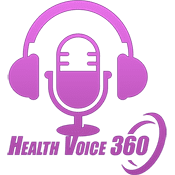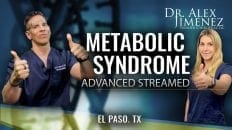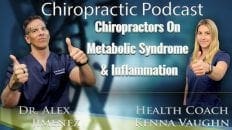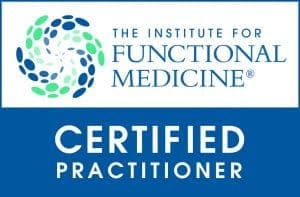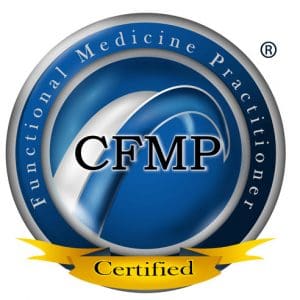Balance is the state of equilibrium; it means to have an equal distribution, and it relates to the optimal state of health. Nowadays, managing our health could seem like a juggling act and not necessarily balance. Indeed, as most modern chronic diseases are multifactorial, their treatment has a multi-faceted approach. However, treating every ill with a pill must be exhausting, considering most medications are associated with adverse secondary effects. Furthermore, scientific research has focused on shedding light on lifestyle changes that can improve hormonal balance and be more sustainable than conventional medical treatments.Â
Table of Contents
High-intensity Interval Training:
For patients dwelling with polycystic ovary syndrome (PCOS) is crucial to recover the hormonal balance by restoring insulin sensitivity in overweight or obese patients. Insulin resistance drives changes related to hyperandrogenism that cause metabolic and reproductive issues. Therefore, the first action is to treat insulin resistance with lifestyle modifications such as dietary changes and exercise to induce weight loss and improve psychological well-being.
High-intensity interval training (HIIT) is a fitness program encompassing intense and brief bouts of exercise followed by an active recovery between intervals. HIIT represents a novel fitness model that can easily fit into women’s lifestyles since most classes are approximately 30-45 minutes long. Furthermore, this exercise regime has a high acceptance rate by women of reproductive age since it addresses most PCOS-specific barriers like physical limitations and low confidence. The RCTs on HIIT and its effects on PCOS women are scarce; nevertheless, they have shown positive results.
HIIT-associated benefits:
- Better insulin sensitivity.
- Increased concentration of high-density lipoprotein.
- Decreased body fat percentage.
- Lower BMI.
- Enhanced Homeostatic Model Assessment of Insulin Resistance (HOMA-IR).
On the other hand, HIIT has been associated with a remarkable effect on lowering cardiovascular risk and all-cause mortality in men and older clinical populations. In addition, research supports that vigorous-intensity exercise has a better outcome in reducing insulin resistance than a more prolonged but light-intensity physical activity.
Time-restricted feeding:
Time-restrictive feeding might sound very bad, but we consistently live the restrictive feeding lifestyle if we think about it. For instance, we do not eat when we are sleeping, or we often skip meals on a busy day. Technically, time-restrictive feeding is a form of intermittent fasting (IF), generally defined as fasting for 12 -20hrs.Â
The benefits associated with time-restrictive feeding are critical for the management of PCOS. The evidence supporting this reports that TRF is beneficial for losing body weight, reduces insulin resistance, and improves metabolic health.Â
Clinical applications:
A small study was performed to determine the health benefits of TRF for six weeks. Also, the number of participants in this study was small, with 15 anovulatory women with PCOS with previously diagnosed hyperandrogenemia. Nevertheless, the results were positive after the six-week intervention half of the participants restored their regular menstrual cycle. This event was associated with an increased level of SHBG, and no changes in the LH and FSH levels were observed, mainly due to the short period of the study.
The population of this study showed significant improvements in their body composition analysis. Indeed, the main changes were reducing total body weight, body fat percentage, and visceral fat area. Furthermore, these improvements can associate with menstrual regularity and reduced testosterone levels.Â
Other essential markers measured in this study were plasma lipids; however, no significant improvements in total cholesterol, triglycerides, and low-density lipoprotein were associated with TRF.
Inflammation is the cornerstone of PCOS, creating an environment where inflamed polycystic ovaries induce insulin resistance. Consequently, this results in the stimulation of androgen production and affects the hypothalamic-pituitary-ovarian axis. This study was able to determine an association between TRF and low hsCRP levels. Furthermore, increased IGF-1 concentrations were observed after the intervention, associated with better glucose metabolism and increased B-cell function.
Secondary effects produced by the intake of medical treatments to improve hormonal balances have led to searching for better, alternative therapies. Natural and alternative therapies comprise the use of herbal treatment and lifestyle changes. Time-restrictive eating and HIIT are lifestyle changes that can be easy to adopt with multiple benefits to our well-being.- Ana Paola RodrÃguez Arciniega, MS
References:
Assah, F K et al. “The association of intensity and overall level of physical activity energy expenditure with a marker of insulin resistance.” Diabetologia vol. 51,8 (2008): 1399-407. doi:10.1007/s00125-008-1033-9
Li, Chunzhu et al. “Eight-hour time-restricted feeding improves endocrine and metabolic profiles in women with anovulatory polycystic ovary syndrome.” Journal of translational medicine vol. 19,1 148. 13 Apr. 2021, doi:10.1186/s12967-021-02817-2
Additional Online Links & Resources (Available 24/7)
Â
Online Appointments or Consultations: https://bit.ly/Book-Online-Appointment
Â
Online Physical Injury / Accident Intake Form:Â https://bit.ly/Fill-Out-Your-Online-HistoryÂ
Â
Online Functional Medicine Assessment:Â https://bit.ly/functionmed
General Disclaimer
Professional Scope of Practice *
The information herein on "Lifestyle Changes to Improve Hormonal Balance" is not intended to replace a one-on-one relationship with a qualified health care professional or licensed physician and is not medical advice. We encourage you to make healthcare decisions based on your research and partnership with a qualified healthcare professional.
Blog Information & Scope Discussions
Welcome to El Paso's Premier Wellness and Injury Care Clinic & Wellness Blog, where Dr. Alex Jimenez, DC, FNP-C, a Multi-State board-certified Family Practice Nurse Practitioner (FNP-BC) and Chiropractor (DC), presents insights on how our multidisciplinary team is dedicated to holistic healing and personalized care. Our practice aligns with evidence-based treatment protocols inspired by integrative medicine principles, similar to those found on this site and our family practice-based chiromed.com site, focusing on restoring health naturally for patients of all ages.
Our areas of multidisciplinary practice include Wellness & Nutrition, Chronic Pain, Personal Injury, Auto Accident Care, Work Injuries, Back Injury, Low Back Pain, Neck Pain, Migraine Headaches, Sports Injuries, Severe Sciatica, Scoliosis, Complex Herniated Discs, Fibromyalgia, Chronic Pain, Complex Injuries, Stress Management, Functional Medicine Treatments, and in-scope care protocols.
Our information scope is multidisciplinary, focusing on musculoskeletal and physical medicine, wellness, contributing etiological viscerosomatic disturbances within clinical presentations, associated somato-visceral reflex clinical dynamics, subluxation complexes, sensitive health issues, and functional medicine articles, topics, and discussions.
We provide and present clinical collaboration with specialists from various disciplines. Each specialist is governed by their professional scope of practice and their jurisdiction of licensure. We use functional health & wellness protocols to treat and support care for musculoskeletal injuries or disorders.
Our videos, posts, topics, and insights address clinical matters and issues that are directly or indirectly related to our clinical scope of practice.
Our office has made a reasonable effort to provide supportive citations and has identified relevant research studies that support our posts. We provide copies of supporting research studies upon request to regulatory boards and the public.
We understand that we cover matters that require an additional explanation of how they may assist in a particular care plan or treatment protocol; therefore, to discuss the subject matter above further, please feel free to ask Dr. Alex Jimenez, DC, APRN, FNP-BC, or contact us at 915-850-0900.
We are here to help you and your family.
Blessings
Dr. Alex Jimenez DC, MSACP, APRN, FNP-BC*, CCST, IFMCP, CFMP, ATN
email: coach@elpasofunctionalmedicine.com
Multidisciplinary Licensing & Board Certifications:
Licensed as a Doctor of Chiropractic (DC) in Texas & New Mexico*
Texas DC License #: TX5807, Verified: TX5807
New Mexico DC License #: NM-DC2182, Verified: NM-DC2182
Multi-State Advanced Practice Registered Nurse (APRN*) in Texas & Multistate
Multistate Compact RN License by Endorsement (42 States)
Texas APRN License #: 1191402, Verified: 1191402 *
Florida APRN License #: 11043890, Verified: APRN11043890 *
* Prescriptive Authority Authorized
ANCC FNP-BC: Board Certified Nurse Practitioner*
Compact Status: Multi-State License: Authorized to Practice in 40 States*
Graduate with Honors: ICHS: MSN-FNP (Family Nurse Practitioner Program)
Degree Granted. Master's in Family Practice MSN Diploma (Cum Laude)
Dr. Alex Jimenez, DC, APRN, FNP-BC*, CFMP, IFMCP, ATN, CCST
My Digital Business Card
RN: Registered Nurse
APRNP: Advanced Practice Registered Nurse
FNP: Family Practice Specialization
DC: Doctor of Chiropractic
CFMP: Certified Functional Medicine Provider
MSN-FNP: Master of Science in Family Practice Medicine
MSACP: Master of Science in Advanced Clinical Practice
IFMCP: Institute of Functional Medicine
CCST: Certified Chiropractic Spinal Trauma
ATN: Advanced Translational Neutrogenomics
